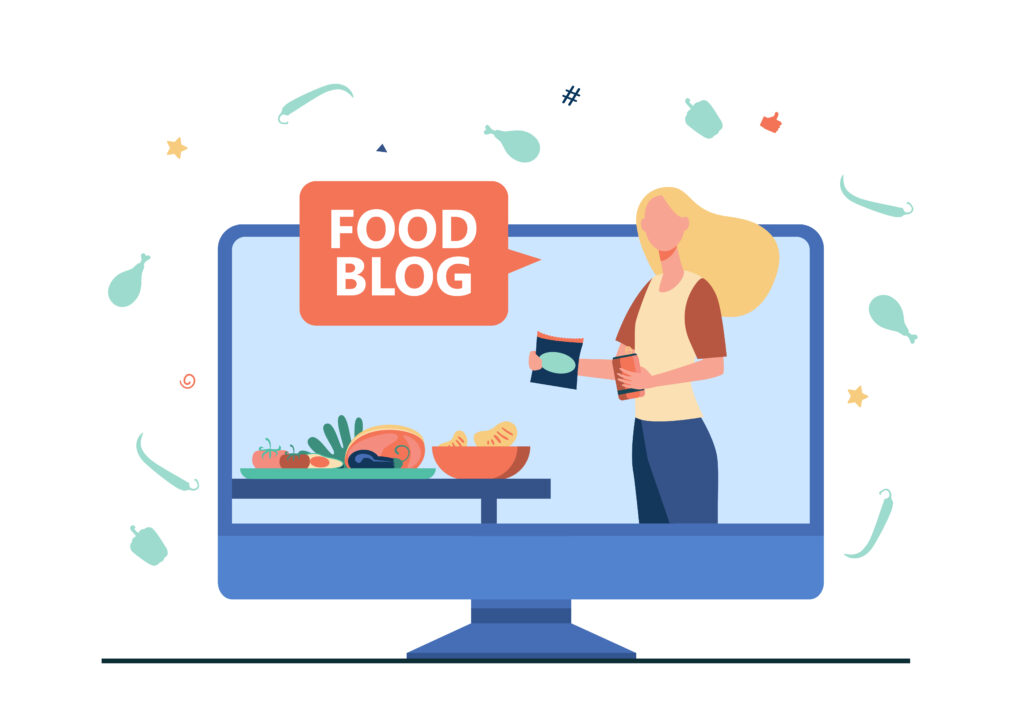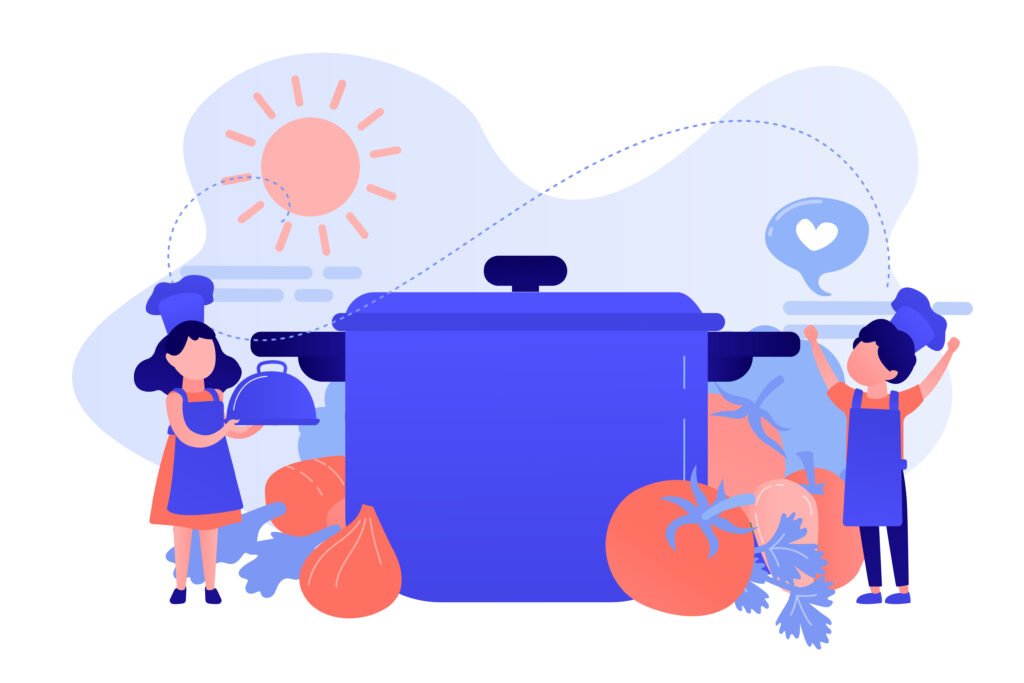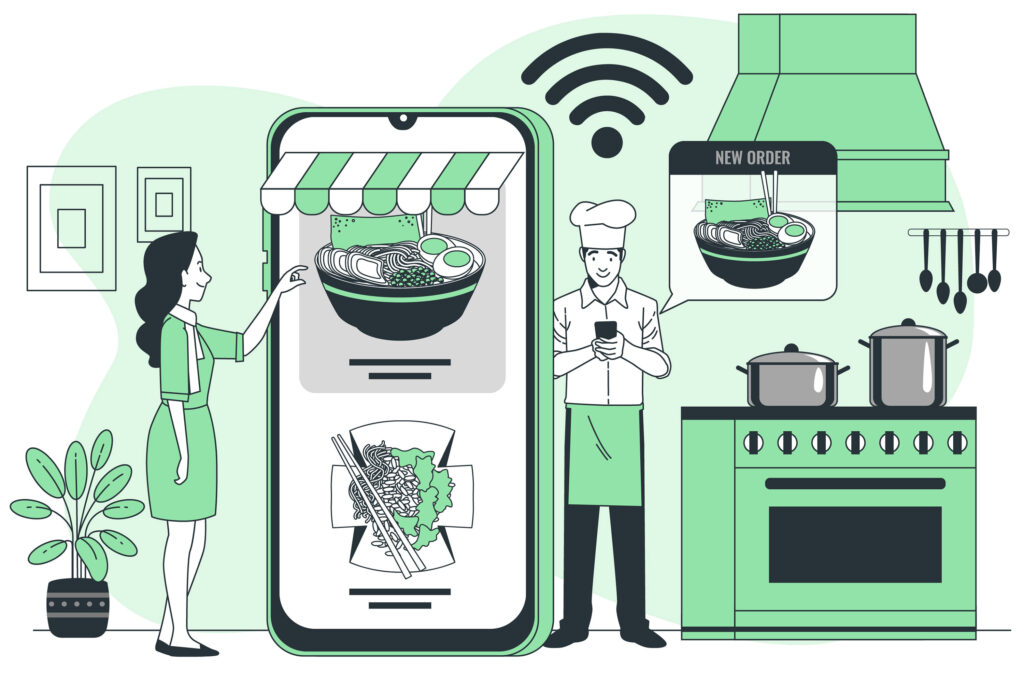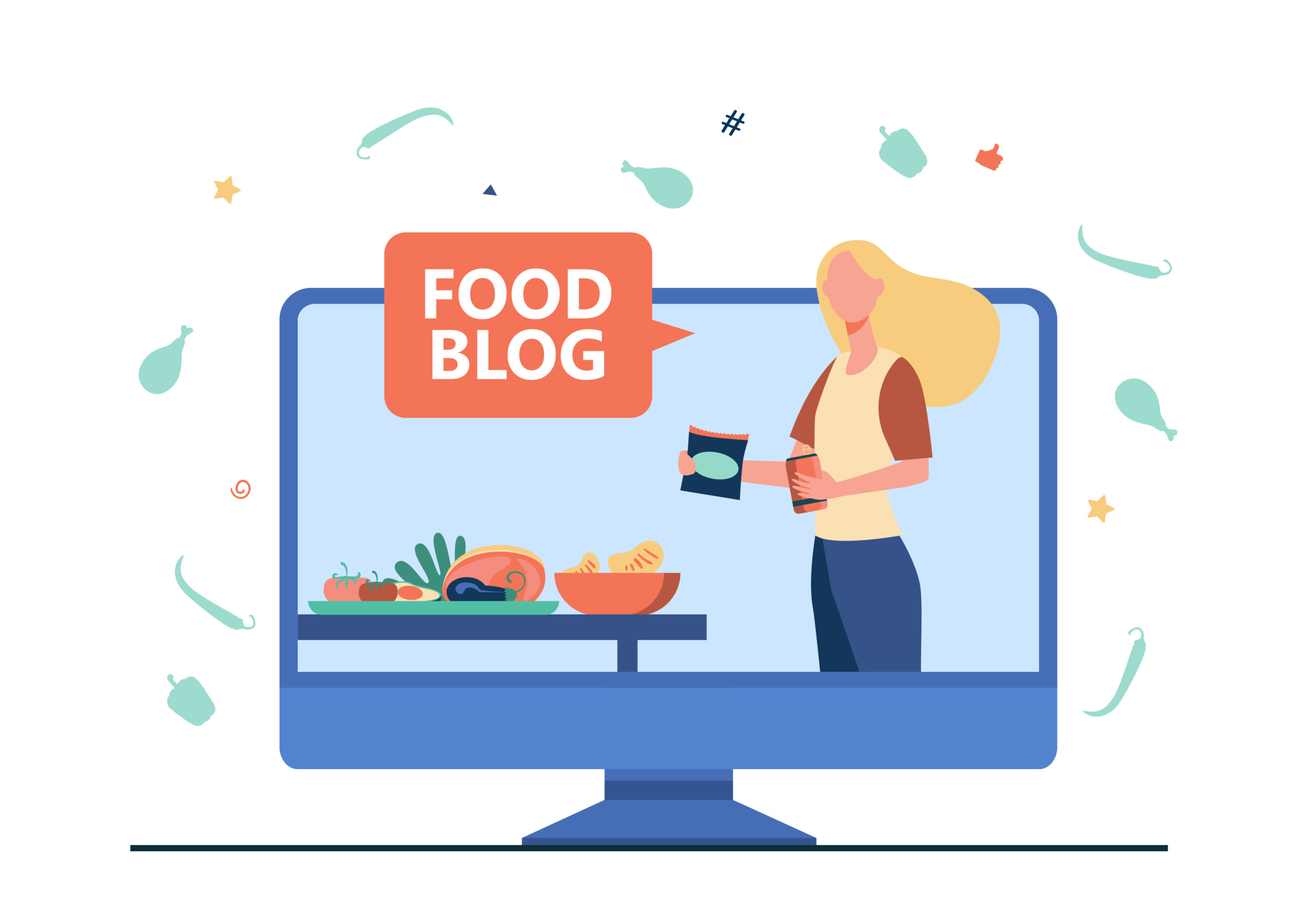Introduction
Being a food blogger isn’t just a hobby—it can be a real and rewarding career. Many people are earning thousands of rupees by sharing their cooking experiences, recipes, and kitchen experiments on their blogs.
If you enjoy cooking—or even just love eating good food—starting a food blog could be a perfect opportunity for you.
In this article, we’ll walk you through everything step-by-step: how to choose your food niche, how to set up your blog, how to create engaging content, how to attract traffic, and finally, how to start making money from your blog easily. Let’s get started!
Table of Contents

Step 1 :Why Start a Food Blog?
Even if you’ve been thinking about starting a food blog, you might still feel confused about whether it’s truly worth the effort. But the truth is, starting a food blog isn’t just enjoyable—it can also be a smart and strategic step for your future!
Share Your Passion for Cooking
Do you absolutely love cooking? Whether you know homely recipes, traditional dishes passed down from your grandmother, or restaurant-style specials like biryani — a food blog is the perfect platform to showcase your talent and share your passion with the world.
Share your recipes.
Post your delicious food photos.
Tell your cooking stories.
These simple steps can help you grow your audience and even start earning from your passion.
Benefits of Starting a Food Blog
Flexibility:
You can run it straight from your home.
No office. No fixed working hours.
Just you, your passion, and your phone or laptop.
Passive Income:
Start a recipe blog, and over time, it can consistently attract traffic.
As your audience grows year after year, you can earn income through ads, affiliate links, and more.
“Cook once, earn forever!”
Creativity:
Alongside cooking, you also get to explore and learn photography, content writing, and even design.
You’re not just cooking — you’re creating something beautiful.
Real Blogger Success Inspiration
Archana’s Kitchen (India-la famous food blog) : She began by sharing simple home-cooked recipes online.
Today, she’s collaborating with major brands and running her own YouTube channel.
Minimalist Baker:They started with simple recipes using just 10 ingredients.
Now, their blog attracts hundreds of thousands of visitors each month and drives consistent product sales.

Step 2 : Choose the Right Niche for Your Food Blog
The first step in starting a food blog is deciding what type of content you want to create — this is called choosing your niche.
Selecting the right niche not only helps with SEO but also makes it easier to earn money from your blog in the long run.
Why Niche Selection Matters for SEO & Monetization?
Imagine posting all kinds of recipes at random — pizza one day, biryani the next, and suddenly a smoothie the day after.
It becomes difficult for both Google and your readers to understand what your blog is really about.
But if you focus on a clear niche, it becomes much easier for your blog to rank on Google.
Your audience will stay more engaged, and you’ll be able to monetize effectively through targeted ads and affiliate links.
Examples of Profitable Food Blog Niches
- Budget Cooking
- Vegan Recipes
- Baking / Desserts
- Local Cuisine (e.g., South Indian, Italian)
- Restaurant Reviews
How to Research Your Niche & Find Your Unique Angle
step 1 :Think about what you love
What do you cook most often at home?
Which dishes are your all-time favorites?
Make a list of your go-to recipes — that’s the perfect place to start your food blog!
Step 2: Check Google trends / search
Example :Try searching for “vegan lunch recipes” on Google — you’ll discover plenty of keyword ideas you can use for your blog content.
step 3 :See your competition
Once you’ve chosen your niche, take time to analyze what other bloggers in that space are doing.
Then, use your own voice, content ideas, and language to create something unique and authentic with ease.
Step 4: Combine your interest + market demand
If you love cooking Tamil dishes but want to reach a global audience, try posting your recipes with English titles and detailed explanations in Tamil.
This combination can help you connect with international readers while still keeping your content authentic and rooted in your culture.

Step 3 : Set Up Your Food Blog – Step-by-Step
Pick a domain Name & Hosting
tips to choose a domain name : Use keyword research tools and Make sure your domain reflects your niche and is easy for your audience to remember.
Recommended hosting platforms (e.g., Bluehost, Hostinger)
Install WordPress or Blog Platform
WordPress is best for beginners & Quick install guide
Choose a Food Blog Theme
Best themes for food bloggers (Foodie Pro, Astra)
Design tips: clean layout, mobile-friendly, easy navigation
Install Essential Plugins for only wordpress platform users
SEO: RankMath / Yoast
Recipe cards (e.g., WP Recipe Maker)
Caching & speed optimization plugins
Social share buttons
Step 4 : Plan and Create High-Quality Content
The key foundation of a successful food blog is quality content.
Simply posting recipes isn’t enough.
Your content needs to be interesting, helpful, and optimized for SEO.
That’s what attracts visitors and helps grow your blog traffic consistently.
How To Write a Recipe Blog Post
A recipe post shouldn’t be too plain or basic.
A well-structured blog post should include storytelling, clear formatting, and the right SEO keywords to make it engaging and discoverable.
Recipe Blog Structure:
- Introduction
- Ingredients List
- Instructions / Step-by-Step Format
- Tips & Variations
- Conclusion
Extra Tip :
- Use SEO keywords naturally
- Add internal links & External link
- Good food photos ( ex: freepik ,pexels , pixabay )
- 1 blog post per day
Step 5 : Drive Traffic to Your Food Blog
- SEO for Food Bloggers
- Pinterest Marketing
- Social Media Platforms
- Email List Building
Step 6: Monetize Your Food Blog
Focus on publishing at least 20 to 30 quality blog posts first . There are many ways to monetize your food blog — including ads, affiliate links, sponsored collaborations, selling your own products, and even freelance opportunities.
Try different options and choose the methods that best suit your style and audience.
Once you’ve built a strong content base, then explore different ways to monetize your blog.
Common Mistakes to Avoid
When starting a food blog, it’s easy to get caught up in the excitement and overlook small but crucial details — and these can affect your long-term growth.
- Ignoring SEO while writing
- Posting content inconsistently
- Poor-quality food photos
- Messy or confusing blog design
- Failing to build an email list
- Not checking your analyticsMissing important monetization rules
If you avoid these common mistakes, your blog will stay engaging for readers and become a consistent source of income over time.
Conclusion
Starting a food blog takes both passion and patience.It’s not an overnight success — but if you consistently create quality content, you can turn your love for cooking into a steady source of income.So far, you’ve learned everything you need to know — how to start a food blog, attract traffic, and build a path to monetization.So, what’s next?Take the first step → choose your niche, set up your blog, and hit publish on your first post.Don’t wait for perfection. Start now and grow along the way. Here’s the truth: Even the best recipes won’t bring results unless you take action.Start today — a few months from now, you’ll be glad you did.
If you have questions or need support on your blogging journey, drop a comment below.
I’ll be here to help you every step of the way. 💬Frequently Asked Questions
Q1.Does starting a food blog require a big investment?
Not at all! You can get started with just ₹2,000–₹3,000 per year for a basic domain and hosting plan.
You can also use free tools like WordPress and Canva to create your content.
As you start earning through ads and affiliate marketing, you can upgrade your tools and scale your blog over time.
Q2. How to Write a Recipe Blog Post ? (The Right Way)
Begin with a short story or introduction ,List the ingredients clearly ,Write step-by-step instructions,Include cooking,tips or alternatives,Use high-quality photos
Q3. Is SEO important for getting traffic to your blog?
Absolutely — SEO is 100% essential. Without it, your blog won’t rank on Google and people won’t be able to find your content.
Use relevant keywords, proper heading tags (like H1 and H2), meta descriptions, and image alt text.
These small efforts help search engines understand your content and bring in consistent, organic traffic over time.
Q4. How can you earn money from a food blog?
There are several effective ways to monetize your food blog:
Display Ads: Use platforms like Google AdSense or Mediavine to earn from traffic.
Affiliate Marketing: Promote products like kitchen utensils or cookbooks through affiliate links (e.g., Amazon).
Sponsored Posts: Partner with food brands to publish paid recipe or product content.
Digital Products: Create and sell your own recipe eBooks, meal plans, or cooking guides.
Freelancing Opportunities: Offer services like recipe writing, food photography, or social media content to other bloggers or businesses.

